| Date | Text | |
|---|---|---|
30 Nov 1906

Emil Fischer |
Emil Fischer (chemistry) Emil Fischer artificially synthesizes peptide amino acid chains and thereby shows that amino acids in proteins are connected by amino group-acid group bonds. |
|
30 Nov 1906
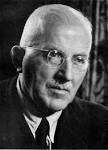
Hermann Staudinger |
Hermann Staudinger (chemistry) Hermann Staudinger prepares the first synthetic β-lactam. |
|
30 Nov 1906

Georges Urbain |
Georges Urbain (chemistry) Georges Urbain discovers Lutetium (from Lutetia, the ancient name of Paris). |
|
30 Nov 1906

Bertram Boltwood |
Bertram Boltwood (geology) Bertram Boltwood proposes that the amount of lead in uranium and thorium ores might be used to determine the Earth's age and crudely dates some rocks to have ages between 410—2200 million years. |
|
30 Nov 1906

Moine Thrust Belt |
Moine Thrust Belt (geology) The Moine Thrust Belt in Scotland is identified by Ben Peach and John Horne, one of the first to be discovered. |
|
30 Nov 1906

phosphate mineral |
phosphate mineral (geology) The rare phosphate mineral tarbuttite is first discovered at Broken Hill, Barotziland-North-Western Rhodesia. |
|
30 Nov 1906

Paul Koebe |
Paul Koebe (mathematics) Paul Koebe conjectures the result of the Koebe quarter theorem. |
|
30 Nov 1906

Reuben Ottenberg |
Reuben Ottenberg (medicine) Reuben Ottenberg performs the first successful human blood transfusion using blood typing and cross-matching at Mount Sinai Hospital, New York. |
|
30 Nov 1906

Paul Ehrlich |
Paul Ehrlich (medicine) Paul Ehrlich develops a chemotherapeutic cure for sleeping sickness. |
|
30 Nov 1906

George Soper |
George Soper (medicine) George Soper identifies "Typhoid Mary" Mallon as an asymptomatic carrier of typhoid in New York. |
|
30 Nov 1906

Dengue fever |
Dengue fever (medicine) Dengue fever becomes the second disease shown to be caused by a virus. |
|
30 Nov 1906
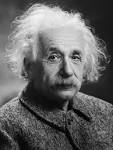
Albert Einstein |
Albert Einstein (physics) Albert Einstein introduces the principle of equivalence of gravitation and inertia and uses it to predict the gravitational redshift. |
|
30 Nov 1906
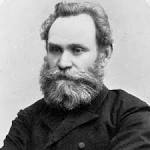
Ivan Pavlov |
Ivan Pavlov (psychology) Ivan Pavlov demonstrates conditioned responses with salivating dogs. |
|
30 Nov 1906

Vladimir Bekhterev |
Vladimir Bekhterev (psychology) Vladimir Bekhterev begins publication of Objective Psychology. |
|
30 Nov 1906

Lee DeForest |
Lee DeForest (technology) Lee DeForest invents the triode thermionic amplifier, starting the development of electronics as a practical technology. |
|
30 Nov 1906

Sweden |
Sweden (technology) Furuholmen Lighthouse in Sweden is the world's first to be equipped with AGA's Dalén light incorporating Gustaf Dalén's invention of the sun valve which turns the beacon's accumulator gas supply on and off using daylight, and for which Dalén will be awarded the Nobel Prize in Physics in 1912. |
|
30 Nov 1906

Autochrome Lumière |
Autochrome Lumière (technology) The Autochrome Lumière is the first color photography process marketed. |
|
30 Nov 1906
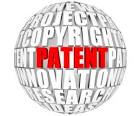
patents |
patents (technology) Samuel Simon patents a screenprinting process in the United Kingdom. |
|
30 Nov 1906
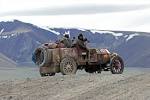
Peking to Paris |
Peking to Paris (technology) Peking to Paris motor race, won by Prince Scipione Borghese driving a 7 litre 35/45 hp Itala. |
|
30 Nov 1906
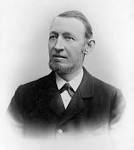
Carl Hagenbeck |
Carl Hagenbeck (zoology) Carl Hagenbeck opens the Tierpark Hagenbeck in Stellingen, near Hamburg, Germany, the first zoo to use open moated enclosures, rather than barred cages, to better approximate animals' natural environments. |
|
30 Nov 1906

Order of Merit |
Order of Merit (awards) Order of Merit: Florence Nightingale |
|
30 Nov 1906
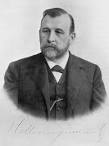
Nikolai Menshutkin |
death Nikolai Menshutkin Nikolai Menshutkin (born 1842), chemist. |
|
12 Jan 1907

Sergei Korolev |
birth Sergei Korolev Sergei Korolev (died 1966), Ukrainian-born space scientist. |
|
20 Jan 1907

Dmitri Ivanovich Mendeleev |
death Dmitri Ivanovich Mendeleev Dmitri Ivanovich Mendeleev (born 1834), chemist. |
|
23 Jan 1907

Hideki Yukawa |
birth Hideki Yukawa Born 23 Jan 1907; died 8 Sep 1981 at age 74. Japanese physician and physicist who shared the 1949 Nobel Prize for Physics for “his prediction of the existence of mesons on the basis of theoretical work on nuclear forces.” In his 1935 paper, On the Interaction of Elementary Particles*, he proposed a new field theory of nuclear forces that predicted the existence of the previously unknown meson. Mesons are particles heavier than electrons but lighter than protons. One type of meson was subsequently discovered in cosmic rays in 1937 by American physicists, encouraging him to further develop meson theory. From 1947, he worked mainly on the general theory of elementary particles in connection with the concept of the “non-local” field. He was the first Japanese Nobel Prize winner. |
|
02 Feb 1907

Dmitry Ivanovich Mendeleev |
death Dmitry Ivanovich Mendeleev Died 2 Feb 1907 at age 72 (born 8 Feb 1834). (Also spelled Mendeleyev) Russian chemist who developed the periodic classification of the elements. In his final version of the periodic table (1871) he left gaps, foretelling that they would be filled by elements not then known and predicting the properties of three of those elements. |
|
28 Feb 1907

Orson Munn |
death Orson Munn Died 28 Feb 1907 at age 82 (born 11 Jun 1824). Orson Desaix Munn was an American ornithologist who was the publisher of Scientific American. The Munn & Company, formed with Salem H. Wales and editor Alfred Beach, bought the six-month-old Scientific American magazine from Rufus Porter. Together, they built it over the years into a great and unique periodical. Because they published a weekly list of all patents, and dealt with inventions and inventors, their enterprise led to Munn & Co. establishing the Scientific American Patent Agency. This was partially responsible for the rapid growth of the American patent system. In its percentage-peak years around 1860, one-third of all patents issued by the U.S. Patent Office were prosecuted by Munn & Co |
|
04 Mar 1907

Rosalind Pitt-Rivers |
birth Rosalind Pitt-Rivers Rosalind Pitt-Rivers, née Henley (died 1990), English biochemist. |
|
18 Mar 1907

J. Z. Young |
birth J. Z. Young J. Z. Young (died 1997), English zoologist and neurophysiologist. |
|
22 Mar 1907

Taximeter |
Taximeter In 1907, the first internal combustion-powered cabs in London with taximeters began operating. The taximeter gave the cab its modern name. Its purpose was to indicate to both driver and passenger the distance travelled and so avoid arguments about payment due. The word derives from French (taxe = price) and Greek (metron = measure). The taximeter was invented by Wilhelm Bruhn in 1891. |
|
31 Mar 1907

Harald Norlin Johnson |
birth Harald Norlin Johnson Born 31 Mar 1907; died 28 Aug 1996 at age 89. American microbiologist who researched arthropod-borne viral diseases such as rabies and encephalitis. While working for the Rockefeller foundation, Johnson isolated a strain of virus from the spinal chord of a 14-year-old girl that died from rabies, introduced the virus to the brain of young chicks, transferred from one chick to another 138 times. In 1945, he gave a sample of this Flury virus (named after the girl) to Dr Hilary Koprowski who spent another ten years developing from it a new vaccine eventually used for dogs in the 1960's. In later work, Johnson took an ecological approach to understanding diseases transmitted by animals and travelled extensively to track down the natural foci of disease agents in wildlife. |
|
15 Apr 1907

Nikolaas Tinbergen |
birth Nikolaas Tinbergen Nikolaas Tinbergen (died 1988), Dutch ethologist, ornithologist and Nobel Prize in Physiology or Medicine laureate. |
|
19 May 1907
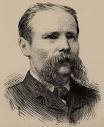
Sir Benjamin Baker |
death Sir Benjamin Baker Died 19 May 1907 at age 67 (born 31 Mar 1840). English civil engineer and the chief designer of the railway bridge over the Firth of Forth, Scotland. His education began as an apprentice at the ironworks of Price & Fox, Neath Abbey, South Wales. In 1861, Baker became an assistant to the consulting engineer Sir John Fowler, and by 1875 was his partner. In 1890, he was the lead designer of the Firth of Forth Bridge with John Fowler. His other projects included several parts of the London Underground, transporting from Egypt and installing Cleopatra's Needle by the River Thames in London, the Aswan Dam on the Nile (Egypt; 1902) and the first Hudson River Tunnel (USA). |
|
19 May 1907
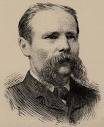
Benjamin Baker |
death Benjamin Baker Sir Benjamin Baker (born 1840), civil engineer. |
|
01 Jun 1907

Frank Whittle |
birth Frank Whittle Frank Whittle (died 1996), English aeronautical engineer. |
|
18 Jun 1907

Alexander Stewart Herschel |
death Alexander Stewart Herschel Alexander Stewart Herschel (born 1836), astronomer. |
|
25 Jun 1907

J. Hans Daniel Jensen |
birth J. Hans Daniel Jensen Born 25 Jun 1907; died 11 Feb 1973 at age 65. Johannes Hans Daniel Jensen was a German physicist who devised the shell nuclear model (1949). |
|
25 Jun 1907

J. Hans D. Jensen |
birth J. Hans D. Jensen Born 25 Jun 1907; died 11 Feb 1973 at age 65. Johannes Hans Daniel Jensen was a German physicist who proposed the shell theory of nuclear structure of nucleons - protons and neutrons - grouped in onion-like layers of concentric shells. He suggested that the nucleons spun on their own axis while they moved in an orbit within their shell and that certain patterns in the number of nucleons per shell made the nucleus more stable. Scientists already knew that the electrons orbiting the nucleus were arranged in different shells. For his model of the nucleus, Jensen shared the 1963 Nobel Prize in physics (with Maria Goeppert-Mayer, who arrived at the same hypothesis independently in the U.S.; and Eugene P. Wigner for unrelated work.) Through the 1950s, Jensen worked on radioactivity. |
|
25 Jun 1907

Hans Daniel Jensen |
birth Hans Daniel Jensen Hans Daniel Jensen (died 1973), German physicist. |
|
26 Jun 1907

Robert Gwyn Macfarlane |
birth Robert Gwyn Macfarlane Robert Gwyn Macfarlane (died 1987), British hematologist. |
|
07 Jul 1907
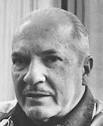
Robert A. Heinlein |
birth Robert A. Heinlein Robert A. Heinlein (died 1988), American hard science fiction author. |
|
14 Jul 1907
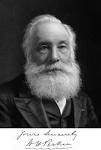
William Perkin |
death William Perkin Sir William Perkin (born 1838), chemist. |
|
24 Aug 1907

First vertical flight |
First vertical flight In 1907, the Bréguet-Richet Gyroplane No. 1 made what is generally accepted as the first vertical flight, hovering about 2 feet (0.6 meters) off the ground for one minute, powered by a 45 h.p. engine. It was built by the brothers Louis and Jacques Bréguet with assistance from Professor Charles Richet. It lacked stability, any control system, and it needed four men to steady it while it hovered, so it did not represent a practical helicopter. (Some sources give the date as 29 Sep 1907.) |
|
29 Aug 1907

Quebec Bridge |
Quebec Bridge (technology) The partially completed Quebec Bridge collapses. |
|
30 Aug 1907

John Mauchly |
birth John Mauchly John Mauchly (died 1980), American co-inventor of the ENIAC computer. |
|
07 Sep 1907

Konstantin Petrzhak |
birth Konstantin Petrzhak Konstantin Petrzhak (died 1998), Polish-born physicist. |
|
14 Sep 1907

Solomon Asch |
birth Solomon Asch Solomon Asch (died 1996), Polish-born social psychologist. |
|
30 Sep 1907

Speed traps |
Speed traps In 1907, motor car speed traps were protested in a letter to The Times, London. Lord Montagu of Beaulieu (whose son founded the National Motor Museum) wrote to challenge anti-motorist complaints as opposing progress. To combat dust cloud nuisance from traffic, he called for more suitable roads: "reserved only for motorists and rubber-tired non-animal traffic - at least between large centres of population." About speed traps, he continued, "By all means let police-traps be placed where there is any reason to think danger may exist, but ... At present, the police neglect their other duties and look upon trapping as a regular sport" producing income to local government from the £5 or £10 fines for speeds of 20 or 30 mph. |
|
30 Sep 1907

Stanley Hooker |
birth Stanley Hooker Stanley Hooker (died 1984), English aeronautical engineer. |
|
02 Oct 1907

Alexander R. Todd |
birth Alexander R. Todd Alexander R. Todd (died 1997), Scottish-born biochemist and Nobel Prize in Chemistry laureate. |
|
21 Oct 1907
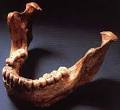
Mauer 1 |
Mauer 1 (paleontology) Jaw of Homo heidelbergensis (Mauer 1) found. |
|
13 Nov 1907

Rear-Admiral Dennis Cambell |
birth Rear-Admiral Dennis Cambell Born 13 Nov 1907; died 6 Apr 2000 at age 92. English naval aviator, test pilot and inventor of the angled flight deck which gives pilots a second chance when landing on an aircraft carrier. Like any great invention, this idea was outstandingly simple. Without it, pilots landing on a straight deck depended on his plane's tail-hook catching a steel arrester wire across the flight deck to stop before crashing into the barrier and aircraft parked at the far end. Cambell's idea meant that aircraft which failed to stop had a clear escape and could "bolt" under reapplied throttle over the port bow. The US Navy first adopted the idea and made such structural alterations to the carrier Antietam. The British Admiralty, impressed by that ship's field tests, then converted their new large carrier Ark Royal and appointed Cambell as Captain. |
|
17 Dec 1907
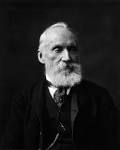
William Thomson, 1st Baron Kelvin |
death William Thomson, 1st Baron Kelvin William Thomson, 1st Baron Kelvin (born 1824), physicist. |
|
25 Dec 1907

Rufus P. Turner |
birth Rufus P. Turner Rufus P. Turner (died 1982), African American electronic engineer. |
|
28 Dec 1907
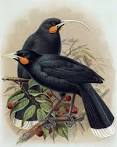
Huia |
Huia (zoology) Last confirmed sighting of a Huia in New Zealand. |